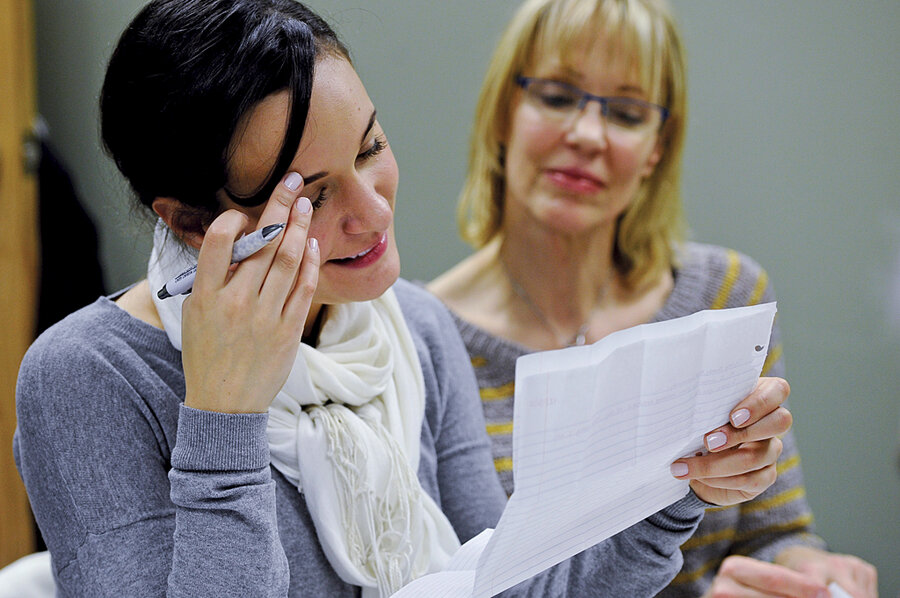After Newtown: a time for solace
Loading...
Time is a blanket. It settles over the wars, disasters, and violence of today, softening the contours of the raw and immediate, turning them first into memory, then history, and eventually half-remembered legend. Time itself doesn’t heal wounds. That takes a higher order of thought. But almost without effort, time gentles the present and helps us move on.
The world is overflowing with places and dates we vow never to forget: Auschwitz, Hiroshima, Gettysburg. At first, we lay wreaths and feel the rush of memory. Then time’s blanket descends. We mark a month, a year, a decade, but new generations cannot feel the same way we do. Dates that will live in infamy once again become Sundays in early December. Hallowed ground in one era is a pleasant park in another.
Less than three months have passed since that terrible Friday morning at Sandy Hook Elementary School in Newtown, Conn. G. Jeffrey MacDonald has listened and watched as the pastor and parishioners of the Newtown United Methodist Church comfort one another and lean on a church family that was always there but has now become an even more essential part of their lives. (You can read Jeff's report here.)
The church sits at the entrance to the Sandy Hook village and has a large parking lot. Media from around the world swarmed in after the shooting. From the outset, the Rev. Mel Kawakami and members of the church kept reporters at bay, determined to maintain a community sanctuary. Still, there was a story to tell.
An official of the national United Methodist Church reached out to Jeff, who has written about religion for many years (see his Dec. 24, 2012, cover story, “The new face of faith”), knowing he would be respectful and trustworthy. His report – and Melanie Stetson Freeman’s sensitive photographs inside the church – is an intimate look at a faith community working through pain, sorrow, and questions engendered by crisis.
One of the church members told Jeff that Newtown had always seemed like Sesame Street to her – safe, diverse, kind, intelligent, happy. That was turned upside down on Dec. 14. But the essential qualities of the community haven’t disappeared. They are manifest in the kindness of a customer paying for everyone’s coffee at Dunkin’ Donuts, the simple act of looking in on a neighbor, the care and discretion people exercise in deciding whether this is or is not the moment to speak up on the issue of gun violence.
We often see news reports of packed churches the Sunday after a tragedy, Jeff notes. And that’s usually where the story ends. News moves on. “But there’s so much more to it,” he says. “Church is a safe space for people to confess, to cry, to feel the presence of sanctuary, to reinterpret the meaning of powerful symbols, to find deeper meaning in hymns and sacraments.” Some of this can be done alone; more needs to be worked out in community, which is what a church is when it is at its best.
Valentine’s Day, Feb. 14, was especially hard in Newtown. Lent, which is approaching its midway point, is a hard season by definition and has been made harder by a cold, snowy winter. Ahead are anniversaries and birthdays and more tears. Good Friday will be 15 weeks to the day. Only 3-1/2 months will have passed by Easter Sunday. Spring and summer will come. But the gentling blanket of time takes time.
“America is a ‘move on’ society,” Jeff notes. “We don’t like to sit with things. We need to sit with things.”








